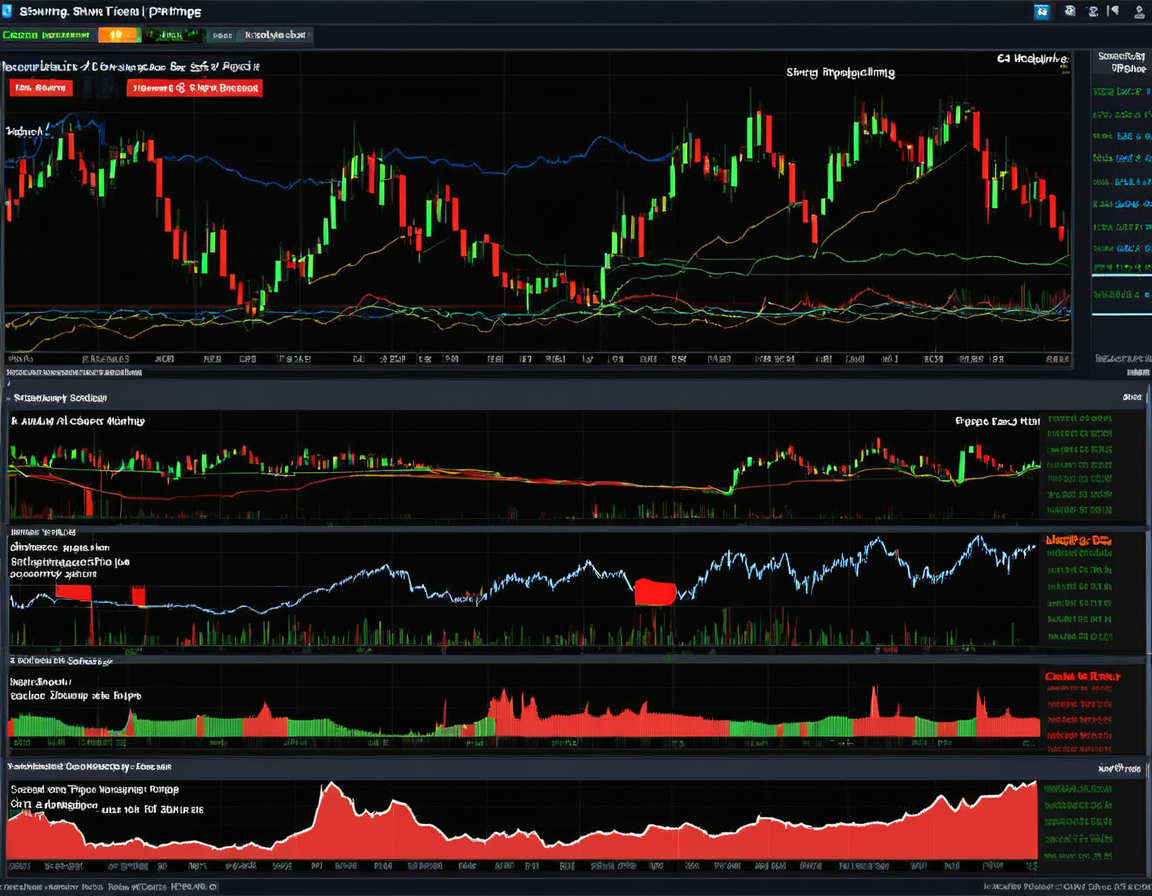Impact of Interest Rates on the Indian Stock Market and Forex
Interest rates play a critical role in both the Indian stock market and the forex market, influencing everything from stock prices to currency exchange rates. For Indian traders, understanding how interest rates affect these markets can lead to more informed investment decisions. In this blog, we’ll explore the relationship between interest rates, RBI monetary policy, and their impact on both the stock market and forex trading in 2024.
What Are Interest Rates and Why Are They Important?
Interest rates refer to the cost of borrowing money, typically set by a country’s central bank. In India, the Reserve Bank of India (RBI) sets the benchmark interest rate, which influences lending rates, investment decisions, inflation, and the value of the Indian Rupee (INR). When interest rates rise, borrowing becomes more expensive, which can slow down economic growth. Conversely, lower interest rates encourage borrowing and investment, boosting economic activity.
For a detailed explanation of interest rates, visit Investopedia’s Interest Rate Guide.
Impact of Interest Rates on the Indian Stock Market
1. Higher Interest Rates Can Slow Down the Stock Market
When the RBI raises interest rates, borrowing becomes more expensive for businesses. Higher interest rates can lead to reduced corporate profits, as companies face increased borrowing costs for expansion and operations. This can cause stock prices to fall, particularly for growth-oriented companies that rely heavily on borrowing.
Example:
A rise in the RBI repo rate might reduce earnings for companies in sectors such as infrastructure and real estate, leading to a decline in their stock prices.
2. Lower Interest Rates Stimulate Stock Market Growth
On the other hand, when the RBI lowers interest rates, it becomes cheaper for businesses to borrow money, allowing for expansion, increased hiring, and higher corporate profits. This often leads to a rise in stock prices, particularly in cyclical sectors like automobiles and consumer goods, which benefit from increased consumer spending.
For insights on how RBI policies affect the stock market, check out Forbes’ article on monetary policy and markets.
3. Banking Stocks and Interest Rate Sensitivity
In the Indian stock market, the banking sector is particularly sensitive to changes in interest rates. When interest rates rise, banks can charge more for loans, which boosts their profitability. However, higher rates can also reduce loan demand. Conversely, lower interest rates may increase loan volumes but compress margins.
For more on how interest rates affect banking stocks, read Economic Times’ banking stock analysis.
Impact of Interest Rates on Forex Trading
1. Interest Rate Differentials and Currency Strength
In the forex market, interest rate differentials between two countries are a major driver of exchange rate movements. When the RBI raises interest rates, the Indian Rupee (INR) typically strengthens because higher interest rates attract foreign capital seeking higher returns. Conversely, when the RBI lowers interest rates, the INR may weaken as investors seek higher yields elsewhere.
Example:
If the RBI raises interest rates while the Federal Reserve keeps US rates unchanged, the USD/INR pair might see the Rupee strengthen against the Dollar.
For more on how interest rates impact currency strength, check out Investopedia’s guide on interest rate differentials in forex.
2. Carry Trade Strategy in Forex
The difference in interest rates between countries often leads to the use of the carry trade strategy, where traders borrow in a low-interest-rate currency (like the Japanese Yen) and invest in a higher-interest-rate currency (like the Indian Rupee). A higher interest rate in India relative to Japan or the US makes the Rupee more attractive for carry trades.
Example:
A trader might sell JPY/INR in anticipation of higher returns from INR-based investments due to India’s relatively higher interest rates.
For more insights on the carry trade strategy, refer to BabyPips’ guide on carry trading.
3. Impact on INR-Based Currency Pairs
Interest rate changes have a direct impact on INR-based currency pairs, such as USD/INR, EUR/INR, and GBP/INR. Indian traders should closely monitor RBI announcements regarding interest rate hikes or cuts, as these can cause significant volatility in the forex market.
For live updates on RBI interest rate decisions and their impact on the forex market, visit DailyFX’s news section.
How to Trade Interest Rate Changes in the Indian Stock and Forex Markets
1. Monitor Central Bank Announcements
The RBI, along with other major central banks like the Federal Reserve and the European Central Bank, regularly announces changes in interest rates and monetary policy. Indian traders should keep a close eye on these announcements, as they can create significant opportunities in both the stock and forex markets.
For regular updates on central bank policies, check out FXStreet’s central bank coverage.
2. Use Stop-Loss Orders in Volatile Markets
Interest rate changes often lead to market volatility. To protect against unexpected losses, Indian traders should use stop-loss orders in both the stock and forex markets. This ensures that positions are automatically closed if the market moves against you due to sudden interest rate announcements.
Learn more about using stop-loss orders at NerdWallet’s guide to stop-loss orders.
3. Diversify Across Asset Classes
Diversifying your portfolio by investing in both the stock market and forex can help mitigate risks associated with interest rate changes. For example, if rising interest rates hurt your stock portfolio, gains from the strengthening Rupee in the forex market could offset some of the losses.
For tips on how to diversify your portfolio effectively, read Forbes’ article on portfolio diversification.
Case Studies: Interest Rate Movements and Their Impact
1. COVID-19 and RBI Interest Rate Cuts (2020)
During the COVID-19 pandemic, the RBI cut interest rates to stimulate the economy, leading to a depreciation of the Indian Rupee. At the same time, the stock market experienced volatility, with sectors like banking and real estate suffering due to reduced earnings potential.
2. US Federal Reserve Rate Hikes (2022-2023)
The Federal Reserve raised interest rates multiple times in response to rising inflation. These rate hikes caused the US Dollar to strengthen against the Indian Rupee, pushing the USD/INR pair higher and impacting Indian traders in both the forex and stock markets.
For a more detailed analysis of the US rate hikes, refer to Forbes’ coverage on Fed policy changes.
Conclusion
Interest rates have a profound impact on both the Indian stock market and the forex market, influencing everything from stock valuations to currency exchange rates. By understanding how interest rate changes affect these markets, Indian traders can make more informed decisions and adjust their strategies accordingly. Whether you’re trading stocks, forex, or both, staying informed about RBI policies and global interest rate trends is essential for success in 2024.







